Showing Spotlights 601 - 608 of 2785 in category All (newest first):
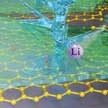 The formation of dendrites on the metal electrodes of lithium metal batteries causes safety and performance concerns. To avoid dendrites, researchers are experimenting with new battery electrolyte chemistries, new separator technologies, and new physical hosts for the lithium metal. Researchers now have discovered a key design rule for Li metal batteries: If you want to suppress dendrites, you have to use a defect-free host. More generally, carbon defects catalyze dendrite growth in metal anodes.
The formation of dendrites on the metal electrodes of lithium metal batteries causes safety and performance concerns. To avoid dendrites, researchers are experimenting with new battery electrolyte chemistries, new separator technologies, and new physical hosts for the lithium metal. Researchers now have discovered a key design rule for Li metal batteries: If you want to suppress dendrites, you have to use a defect-free host. More generally, carbon defects catalyze dendrite growth in metal anodes.
Feb 13th, 2019
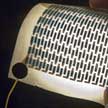 Over the past ten years, paper has emerged as a focus area for researchers developing innovative techniques for printed basic electronics components. The goal of this research is to replace plastic substrates with low-cost, versatile and sustainable materials. The main advantages of investing in paper for electronics and energy storage devices are the low cost of the technology; the potentiality to recover device components and recycle the substrate as well as the active materials; and the production of environmentally harmless and biocompatible devices.
Over the past ten years, paper has emerged as a focus area for researchers developing innovative techniques for printed basic electronics components. The goal of this research is to replace plastic substrates with low-cost, versatile and sustainable materials. The main advantages of investing in paper for electronics and energy storage devices are the low cost of the technology; the potentiality to recover device components and recycle the substrate as well as the active materials; and the production of environmentally harmless and biocompatible devices.
Feb 7th, 2019
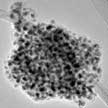 Researchers report significant advances in developing a high-temperature, fast nanomanufacturing technique for the large-scale production of ultra small metal nanoclusters decorated in a graphene host matrix. The size and morphology of the metal nanoclusters can be controlled by varying the reaction temperature and the mass loading of metal salt in the graphene aerosol nanoreactors. This one-step continuous aerosol-based thermal shock technique offers considerable potential for the manufacturing of well-dispersed and uniform nanoclusters stabilized within a host matrix.
Researchers report significant advances in developing a high-temperature, fast nanomanufacturing technique for the large-scale production of ultra small metal nanoclusters decorated in a graphene host matrix. The size and morphology of the metal nanoclusters can be controlled by varying the reaction temperature and the mass loading of metal salt in the graphene aerosol nanoreactors. This one-step continuous aerosol-based thermal shock technique offers considerable potential for the manufacturing of well-dispersed and uniform nanoclusters stabilized within a host matrix.
Feb 4th, 2019
 4D printing allows a 3D printed structure to change its configuration or function with time in response to external stimuli such as temperature, light, water, pH, etc. The basic idea is to manipulate materials at nano and micro levels in order to produce, via 3D printing, materials that can modify their structures over time at the macro level. Based on 4D printing, 3D printed objects from nano- to macroscale can be fabricated as smart devices, metamaterials, and origami for various functional applications in prototype, aerospace, biomedicine, etc.
4D printing allows a 3D printed structure to change its configuration or function with time in response to external stimuli such as temperature, light, water, pH, etc. The basic idea is to manipulate materials at nano and micro levels in order to produce, via 3D printing, materials that can modify their structures over time at the macro level. Based on 4D printing, 3D printed objects from nano- to macroscale can be fabricated as smart devices, metamaterials, and origami for various functional applications in prototype, aerospace, biomedicine, etc.
Jan 31st, 2019
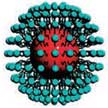 Whereas the evolutionary path of the atomic world has occurred over billions of years, the evolutionary path of the synthetic nanoparticle world has just begun. Man-made nanoparticle assemblies are beginning to revolutionize different fields including thermoelectronics, photoelectronics, catalysts, energy generation and storage, as well as medical diagnostics and therapeutics. Using the unconventional approach of comparing the atomic and nanoparticle worlds authors describe the development of nanoparticle research during the past several decades and provide pointers as to what the future might hold.
Whereas the evolutionary path of the atomic world has occurred over billions of years, the evolutionary path of the synthetic nanoparticle world has just begun. Man-made nanoparticle assemblies are beginning to revolutionize different fields including thermoelectronics, photoelectronics, catalysts, energy generation and storage, as well as medical diagnostics and therapeutics. Using the unconventional approach of comparing the atomic and nanoparticle worlds authors describe the development of nanoparticle research during the past several decades and provide pointers as to what the future might hold.
Jan 22nd, 2019
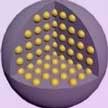 Potassium-ion batteries (PIBs) have been considered as promising alternatives to lithium-ion batteries due to the rich natural abundance of potassium and similar redox potential with Li+/Li. Recently, researchers have designed and fabricated a novel antimony carbon composite PIB anode via a facile and scalable electrospray-assisted strategy and found that this anode delivered super high specific capacities as well as cycling stability in a highly concentrated electrolyte. These encouraging results will significantly promote the deep understanding of the fundamental electrochemistry in Potassium-ion batteries as well as rational development of efficient electrolyte systems for next generation high-performance Potassium-ion batteries.
Potassium-ion batteries (PIBs) have been considered as promising alternatives to lithium-ion batteries due to the rich natural abundance of potassium and similar redox potential with Li+/Li. Recently, researchers have designed and fabricated a novel antimony carbon composite PIB anode via a facile and scalable electrospray-assisted strategy and found that this anode delivered super high specific capacities as well as cycling stability in a highly concentrated electrolyte. These encouraging results will significantly promote the deep understanding of the fundamental electrochemistry in Potassium-ion batteries as well as rational development of efficient electrolyte systems for next generation high-performance Potassium-ion batteries.
Jan 21st, 2019
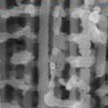 By re-designing interconnected nanowire networks, researchers fabricated novel nanostructured current collectors, which are the first to combine very high surface area, high porosity, substantially large pores and mechanical flexibility. Thanks to its ordered microstructure, the material can uniquely combine high porosity of cellular metal foams with high surface area of state-of-the-art nanoporous dealloyed metals, which allowed it to surpass the electrochemical performance of up to 300-thicker commercial electrodes.
By re-designing interconnected nanowire networks, researchers fabricated novel nanostructured current collectors, which are the first to combine very high surface area, high porosity, substantially large pores and mechanical flexibility. Thanks to its ordered microstructure, the material can uniquely combine high porosity of cellular metal foams with high surface area of state-of-the-art nanoporous dealloyed metals, which allowed it to surpass the electrochemical performance of up to 300-thicker commercial electrodes.
Jan 18th, 2019
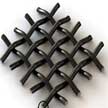 Motivated by the high level of flexibility exhibited by spider webs, scientists have developed a novel design for highly flexible and sensitive piezoresistive sensors based on an elastomer-filled graphene-woven fabric (E-GWF) structure. This technique mimics the distinct core-shell structure of spider webs. This fabrication method could also be extended to other 1D and 2D materials for many emerging practical applications. In addition to excellent sensing capability, the E-GWF also shows unusual switching behavior at large strains owing to the reversible cracking and reconnection of interconnected graphene tubes.
Motivated by the high level of flexibility exhibited by spider webs, scientists have developed a novel design for highly flexible and sensitive piezoresistive sensors based on an elastomer-filled graphene-woven fabric (E-GWF) structure. This technique mimics the distinct core-shell structure of spider webs. This fabrication method could also be extended to other 1D and 2D materials for many emerging practical applications. In addition to excellent sensing capability, the E-GWF also shows unusual switching behavior at large strains owing to the reversible cracking and reconnection of interconnected graphene tubes.
Jan 17th, 2019
 The formation of dendrites on the metal electrodes of lithium metal batteries causes safety and performance concerns. To avoid dendrites, researchers are experimenting with new battery electrolyte chemistries, new separator technologies, and new physical hosts for the lithium metal. Researchers now have discovered a key design rule for Li metal batteries: If you want to suppress dendrites, you have to use a defect-free host. More generally, carbon defects catalyze dendrite growth in metal anodes.
The formation of dendrites on the metal electrodes of lithium metal batteries causes safety and performance concerns. To avoid dendrites, researchers are experimenting with new battery electrolyte chemistries, new separator technologies, and new physical hosts for the lithium metal. Researchers now have discovered a key design rule for Li metal batteries: If you want to suppress dendrites, you have to use a defect-free host. More generally, carbon defects catalyze dendrite growth in metal anodes.
 Subscribe to our Nanotechnology Spotlight feed
Subscribe to our Nanotechnology Spotlight feed





